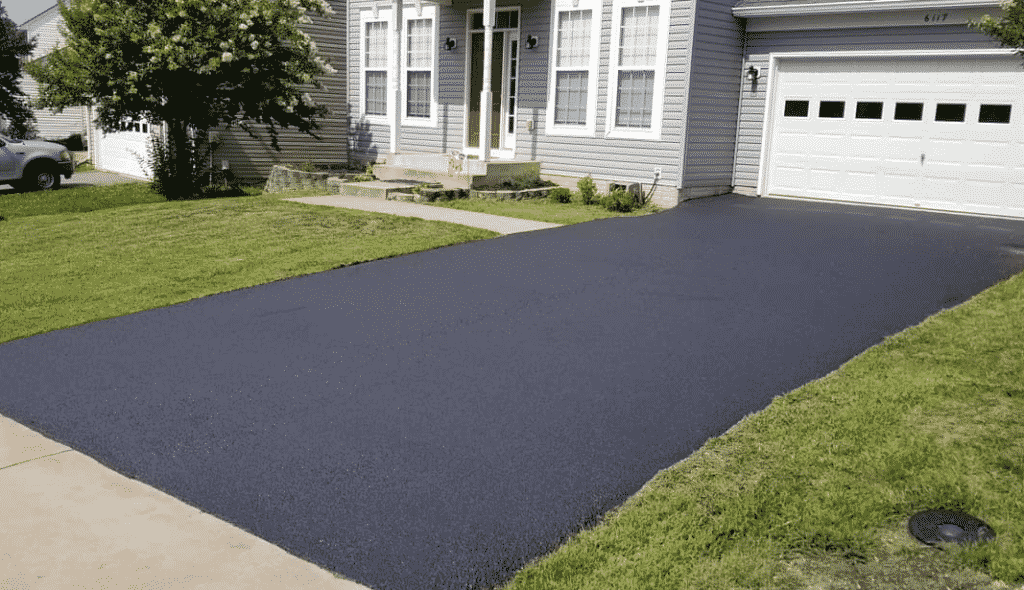Efficient Asphalt Repair: Cold Mix Sealing Techniques Introduced
Wiki Article
Cold Mix Asphalt Vs. Hot Mix Asphalt: Which Is Right for You?

Structure Distinctions
Cold mix asphalt is generated by emulsifying the asphalt binder with water and an emulsifying representative before blending it with accumulation. The warm mix asphalt manufacturing procedure includes heating up the aggregate and asphalt binder separately prior to incorporating them at the asphalt plant.
Furthermore, chilly mix asphalt has a tendency to be less thick and much more versatile than warm mix asphalt. This adaptability makes it much better suited for locations with higher degrees of activity, such as driveways or roadways with rush hour. On the other hand, warm mix asphalt is known for its high toughness and resistance to rutting and cracking, making it a favored option for highways and high-traffic roadways where longevity is crucial.
Setup Refine Differences
The process of setting up chilly mix and warm mix asphalt displays notable variances in their needs and treatments. In contrast, warm mix asphalt requires a more sophisticated setup procedure. Due to the heating requirements, hot mix asphalt installations are generally carried out by professionals with specific devices, making certain a much more structurally sound and irreversible outcome.Durability and Durability Aspects
When considering asphalt choices, resilience and long life are essential aspects to review for lasting pavement performance. Warm mix asphalt (HMA) is known for its extraordinary sturdiness and durability.
In regards to durability, HMA typically surpasses CMA as a result of its premium stamina and resistance homes. HMA sidewalks have a longer service life, calling for much less regular repair work and upkeep, which can translate to cost financial savings over time. In addition, HMA pavements are more easily customizable to meet certain project needs, further improving their durability.
Cost Considerations
Taking into consideration the financial effects is a vital aspect when reviewing the selection in between hot mix asphalt (HMA) and cool mix asphalt (CMA) for pavement jobs. While the first price of hot mix he said asphalt is typically more than that of cool mix asphalt, HMA usually offers a much more economical option in the long run as a result of its superior sturdiness and long life. HMA is understood for its ability to hold up against rush hour loads and rough climate condition, reducing the need for constant repair work and maintenance. On the other hand, cool mix asphalt is extra budget friendly in advance however may need more frequent patching and resurfacing, resulting in greater upkeep prices gradually.In enhancement to material prices, it's important to take into consideration the expenditures connected with setup and upkeep when comparing HMA and CMA. Eventually, the decision between HMA and CMA need to take into account not simply the preliminary price however also the long-term financial effects to establish the most cost-efficient option for the particular pavement job.
Environmental Influence Comparison
Contrast of the ecological effects in between hot mix asphalt (HMA) and cold mix asphalt (CMA) discloses distinct distinctions in sustainability methods. HMA production calls for high temperature levels, leading to boosted power consumption and greenhouse gas emissions.Moreover, the use of CMA often includes recycling existing asphalt sidewalk, promoting source preservation and decreasing the amount of waste sent to land fills. This reusing facet further enhances the sustainability of CMA contrasted to HMA. On the whole, when thinking about the environmental influence, CMA emerges as a much more eco sustainable option because of its reduced energy requirements, decreased discharges, and the potential for recycling existing products. By selecting CMA over HMA, road building jobs can add favorably to environmental conservation efforts.
Final Thought
In verdict, the choice between chilly mix asphalt (CMA) and hot mix asphalt (HMA) depends upon various factors such as make-up, installment procedure, longevity, longevity, price, and ecological effect. page asphalt repair. While CMA uses a quick and economical solution for minor repair services, HMA guarantees exceptional toughness and long life for rush hour areas. Consider these factors thoroughly to establish which kind of asphalt is the ideal choice for your paving requires

Taking into consideration the financial effects is an important facet when assessing the selection in between hot mix asphalt (HMA) and cold mix asphalt (CMA) for pavement tasks. While the first expense of hot mix asphalt is normally higher than that of chilly mix asphalt, HMA commonly provides a much more cost-efficient option in the long run due to its superior toughness and long life. asphalt repair.Comparison of the environmental impacts in between hot mix asphalt (HMA) and cold mix asphalt (CMA) exposes unique distinctions in sustainability techniques.In verdict, the option between cool mix asphalt (CMA) and hot mix asphalt (HMA) depends on numerous aspects such as structure, setup procedure, sturdiness, durability, cost, and environmental influence
Report this wiki page